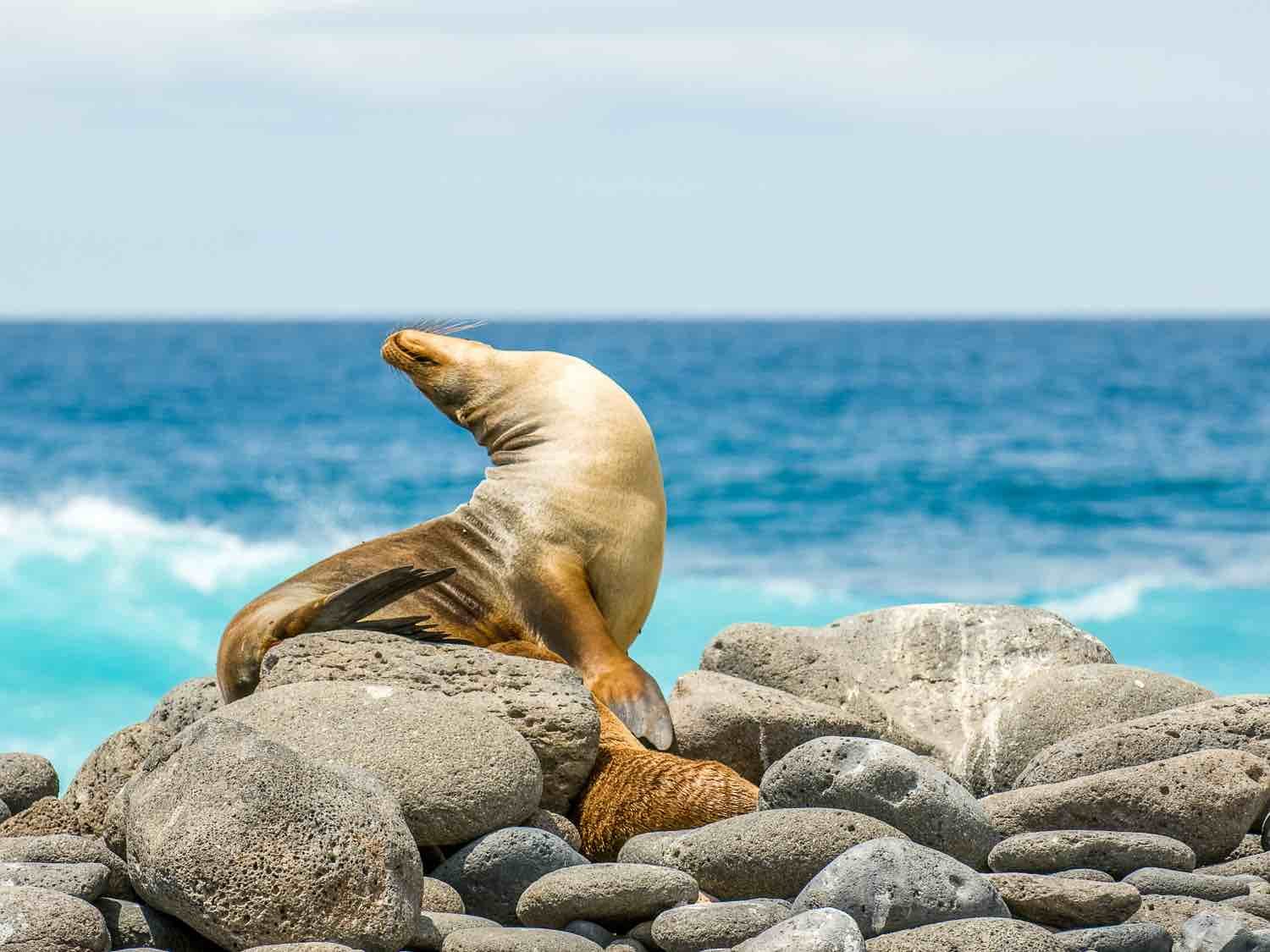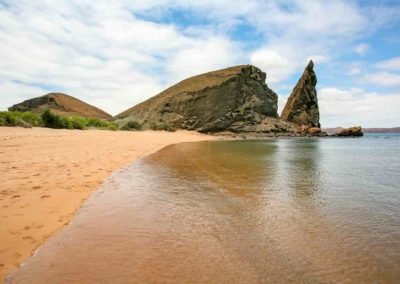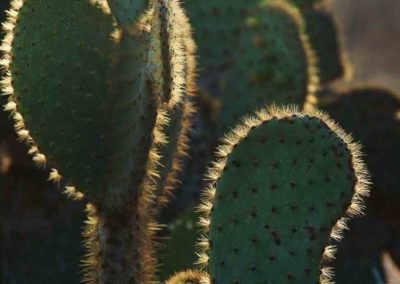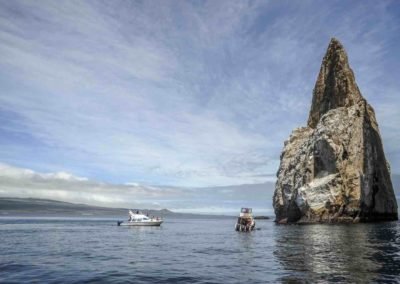The Galapagos Islands
The Galapagos Archipelago consists of thirteen main islands, six minor islands, and scores exposed islets and rocks.
Each offers different opportunities for visitors. Most have abundant bird life. Some are known for their strange volcanic features and plant varieties.
Yet another group is famous for reptiles and sea mammals.
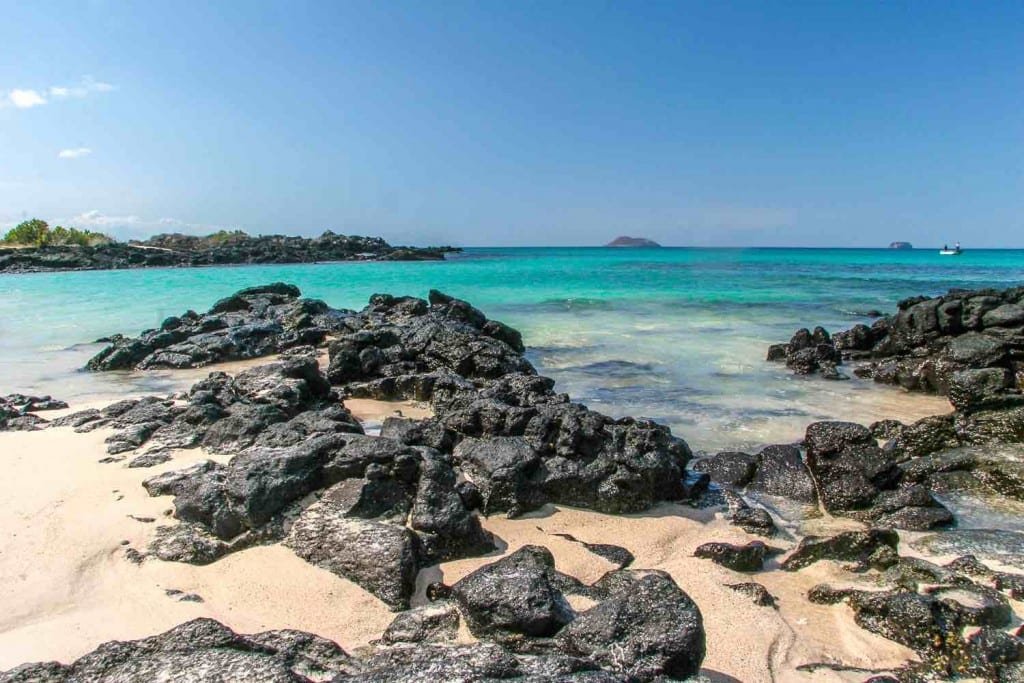
Offshore, divers and snorkelers in the Galapagos can observe:
- Sea Lions
- Marine Iguanas
- Spectacular Fish Species
- Gentle Whale Sharks
- Schools of Hammerheads
Like the archipelago itself (also known as the “Enchanted Isles” or the Encantadas), most of the individual islands of the Galapagos have multiple names, acquired from years of successive control.
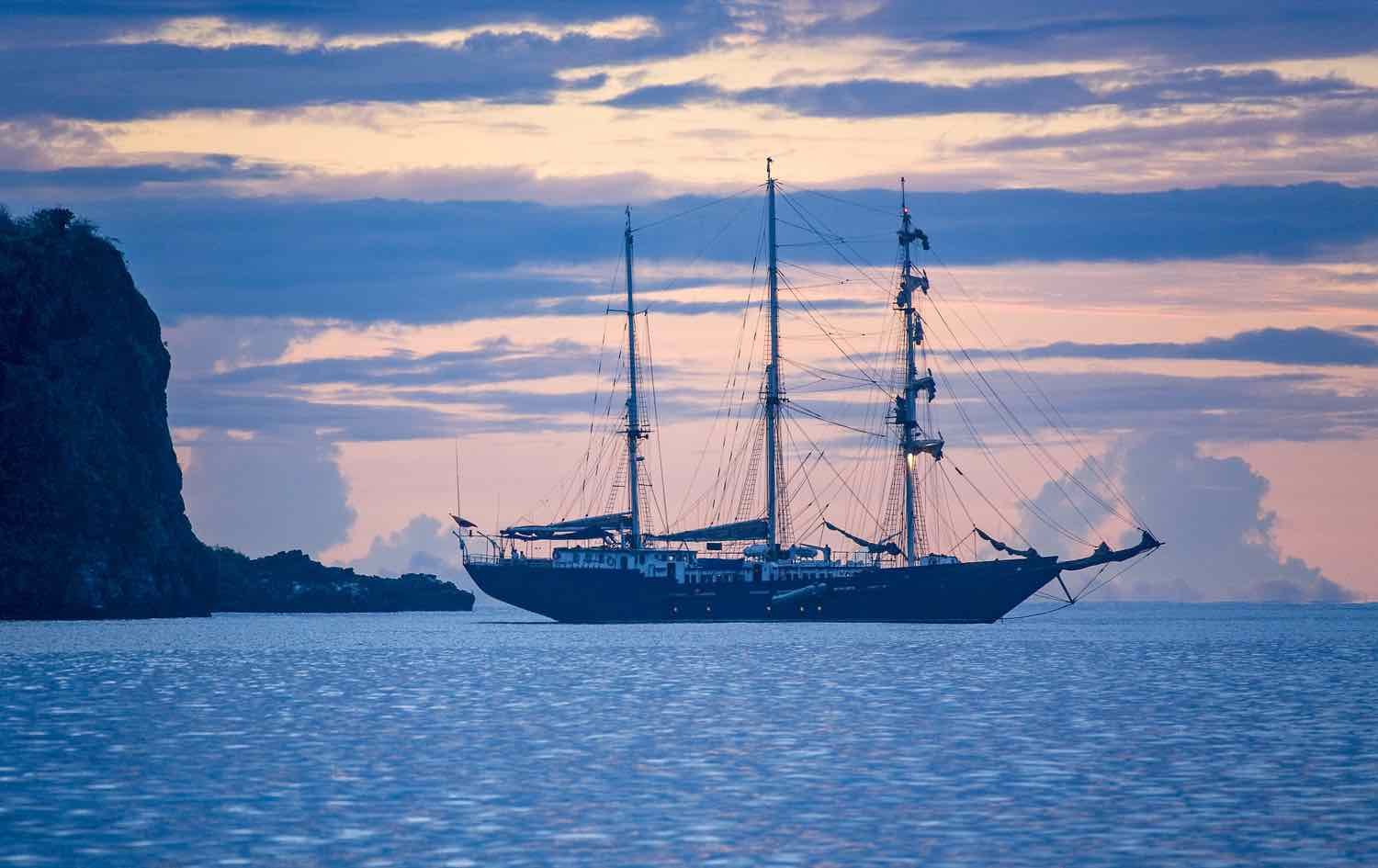
Baltra (South Seymour)
Baltra (South Seymour) is home to the Galapagos Ecological Airport (airport code GPS). In recent history, South Seymour Island was also used as a military base.
South Seymour’s pier is a five-minute drive from the air terminal. Dry, with scrubby vegetation. Baltra is located a short distance north of Santa Cruz.
Bartolome
Bartolome (Bartholomew) is a small island located just off the eastern side of Santiago.
Bartholomew is famous for iconic conical formation—Pinnacle Rock—around which penguins and sea lions can be observed.
Notably, Bartolome island has a wooden staircase leading to its summit and two sandy beaches good for swimming.
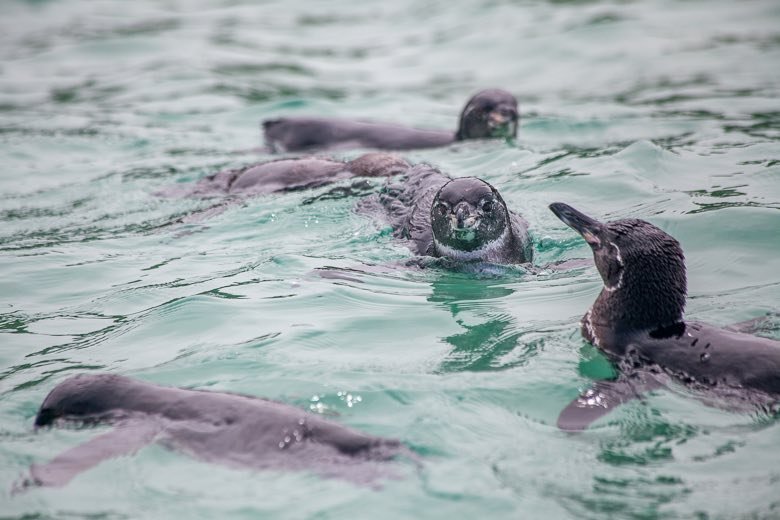
Darwin
Darwin (Culpepper) is the most remote island in the Galapagos, located at the far northwest of the archipelago.
This small island is home to various seabirds, but its main attraction is its sea life.
Divers come to Darwin Island to witness huge schools of hammerhead sharks, a rare sight in the central cluster of islands.
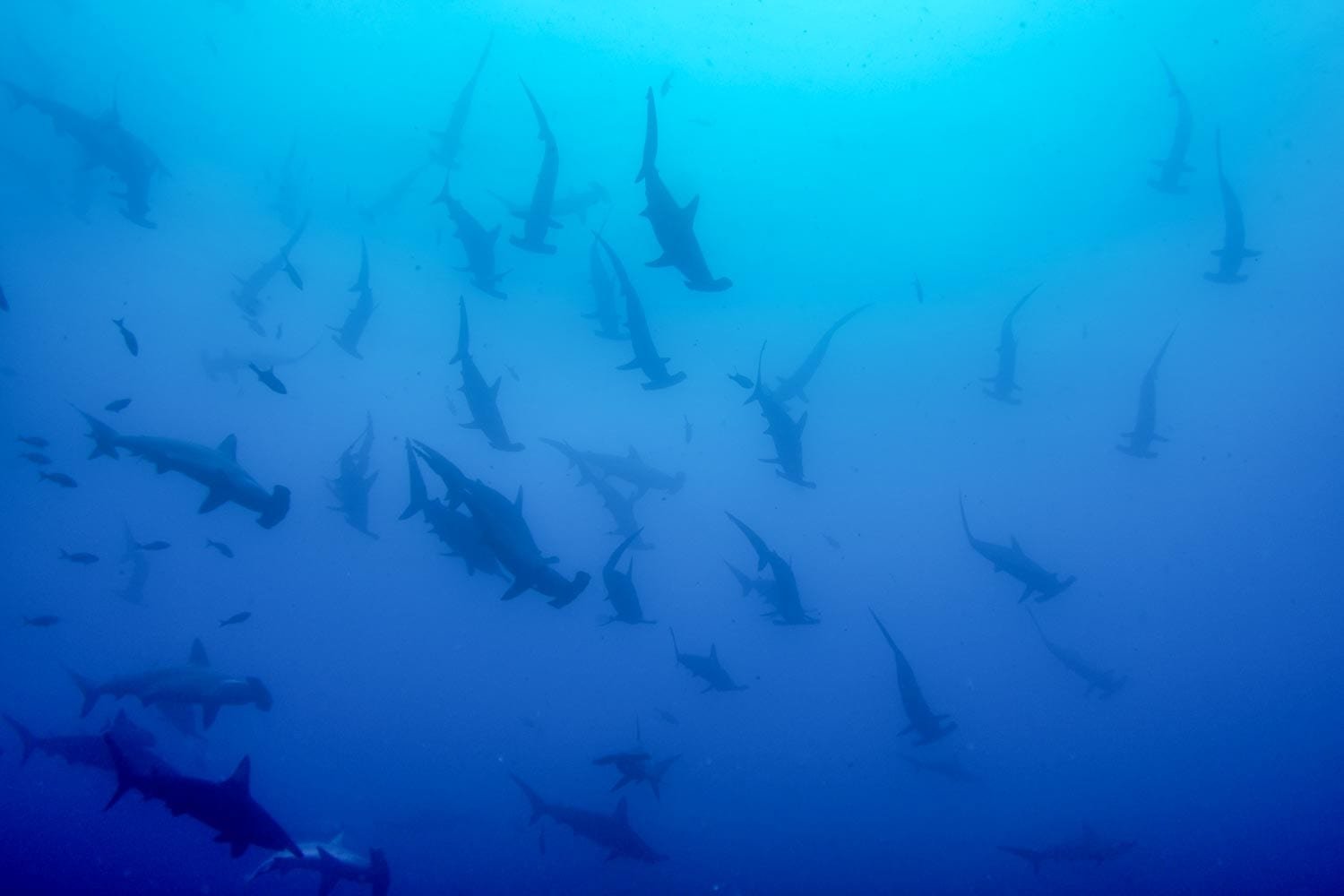
Espanola
Espanola (Hood) is the large southeastern-most island. Gardner Bay has a white sand beach populated by sea lions.
This is an excellent place to swim with these friendly mammals.
Punta Suarez is a nesting site for blue-footed boobies and Nazca boobies. Marine iguanas, Darwin finches, and Galapagos doves are also found here.
From April to November, Espanola is one of the best places to witness waved albatross mating rituals. Hood Island also has a famous blowhole.
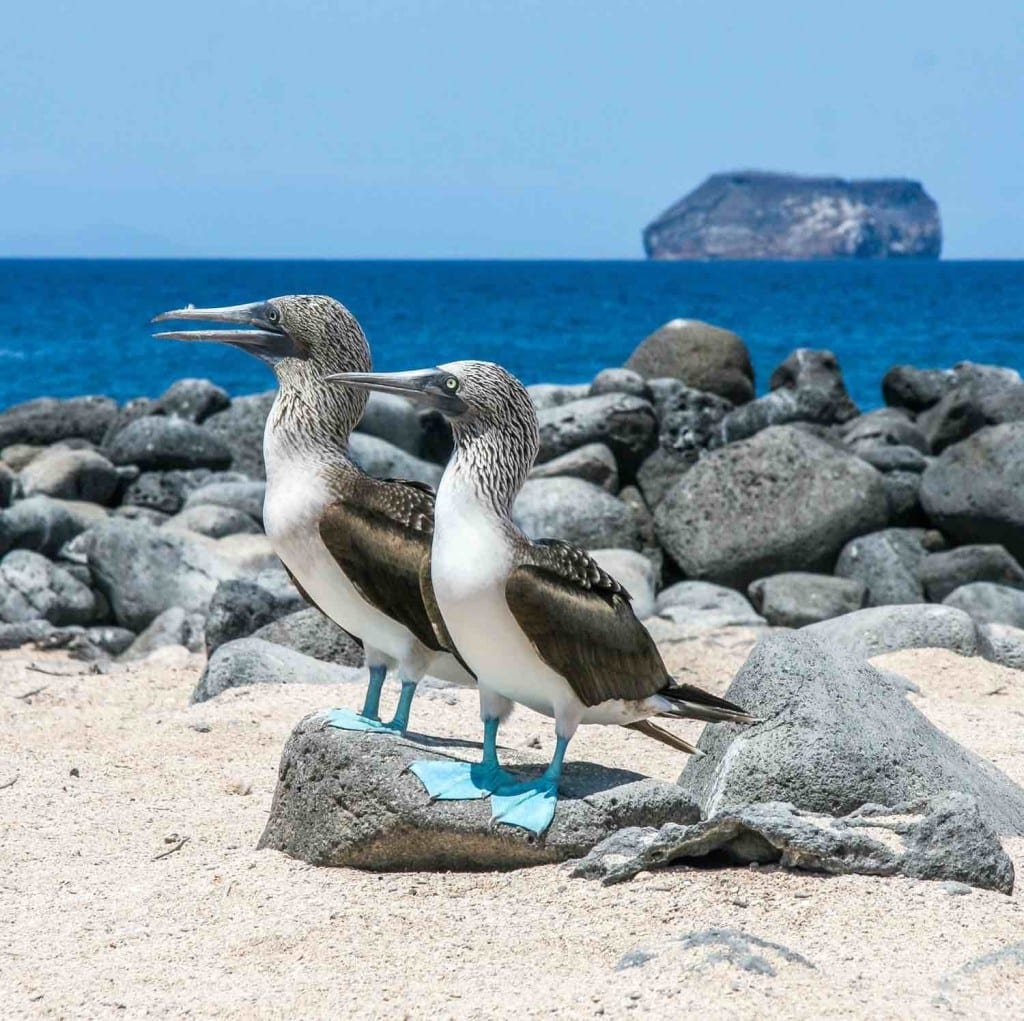
Fernandina
Fernandina (Narborough) is a large island found just west of Isabela.
Geologically speaking, Fernandina is the newest island in the Galapagos.
The primary landing point for this island is Punta Espinoza, where visitors can walk among hundreds of marine iguanas on black lava rocks.
Flightless cormorants, penguins, pelicans, sea lions, and mangrove forests are also found on Fernandina.
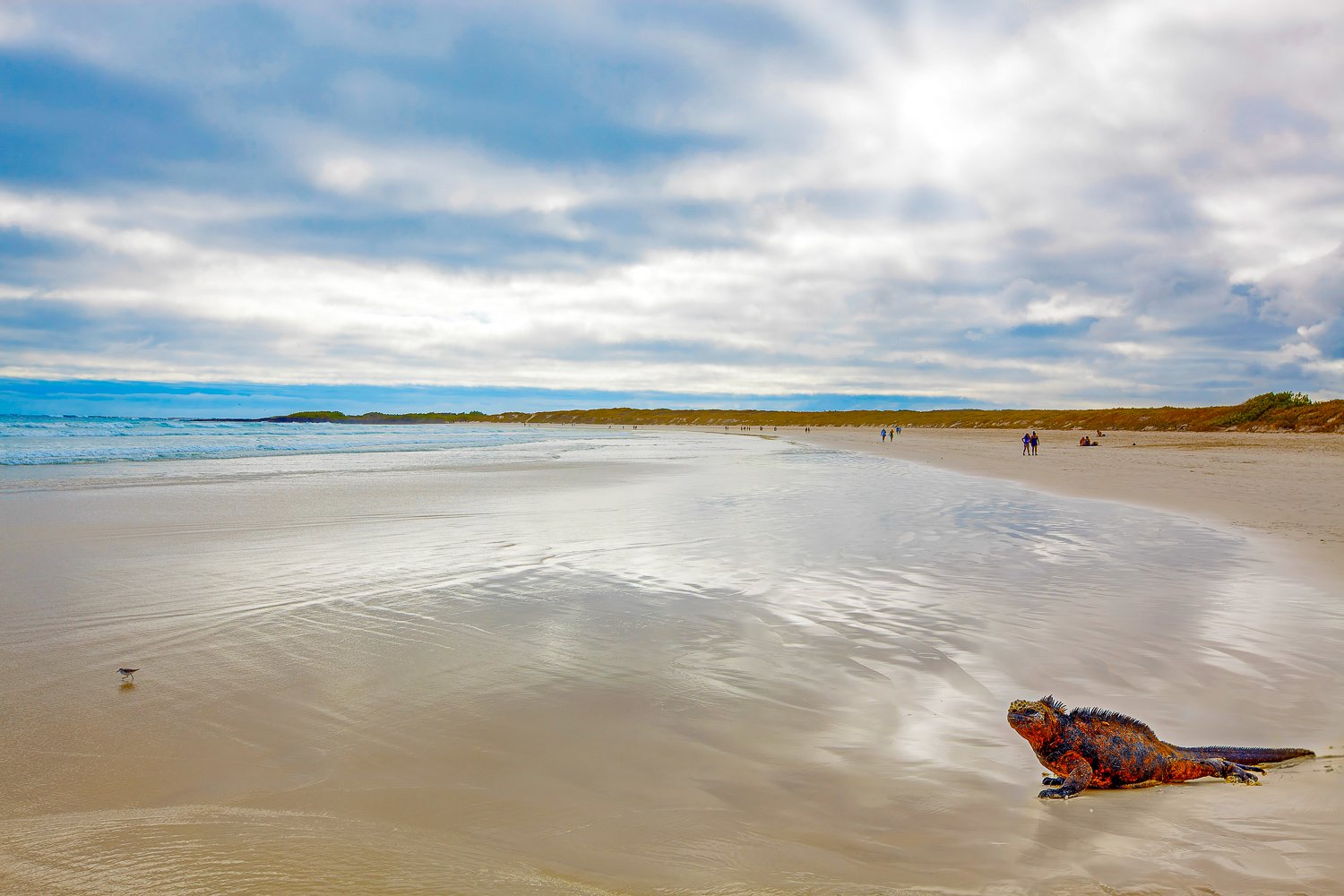
Floreana
Floreana (Santa Maria or Charles) is a large island due south of Santa Cruz. Post Office Bay, located on the island’s north side, is the site of the do-it-yourself mail barrel set up by 18th-century whalers.
Here you will also find El Mirador, one of the newest sites accessible to visitors. Flamingos are often seen at Point Cormorant, a local beach.
Floreana Island also has a white sand beach where sea turtles nest from December to May.
Some of the best snorkeling areas in the Galapagos are the Devil’s Crown and Champion islets.
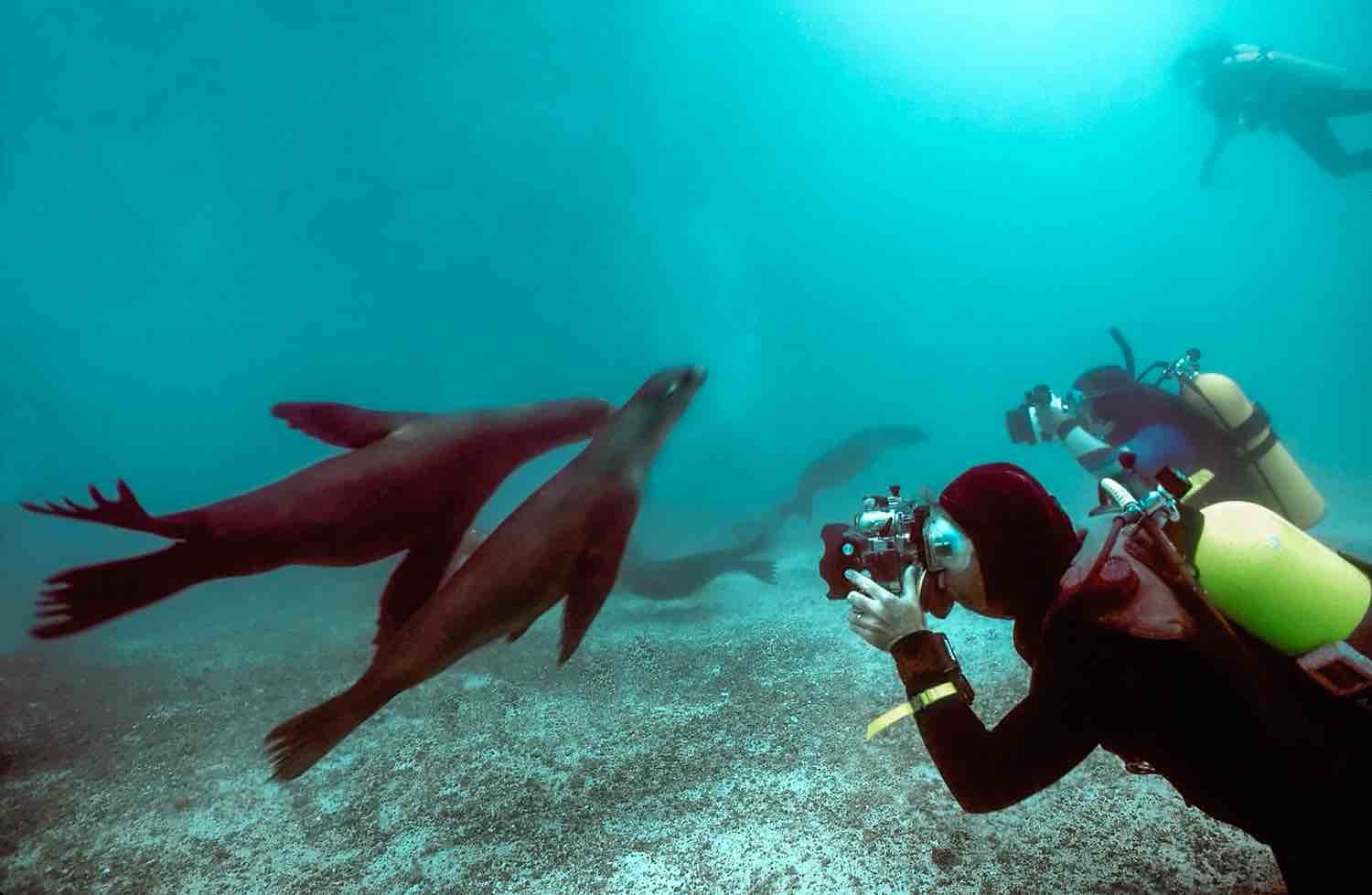
Isabela
Isabela (Albemarle) is the largest island in the group. At the natural harbor known as Tagus Cove, whalers and pirates carved inscriptions on the rock faces.
Urbina Bay, located on the central west coast at the base of Darwin and Alcedo volcanoes, is home to a dark volcanic beach.
To the south, Elizabeth Bay presents a desolate, volcanic landscape populated by Frigatebirds and pelicans.
Land iguanas and giant tortoises can be seen year-round on Isabela, which is understandably the home of the famed Centro de Crianza de Tortugas Gigantes.
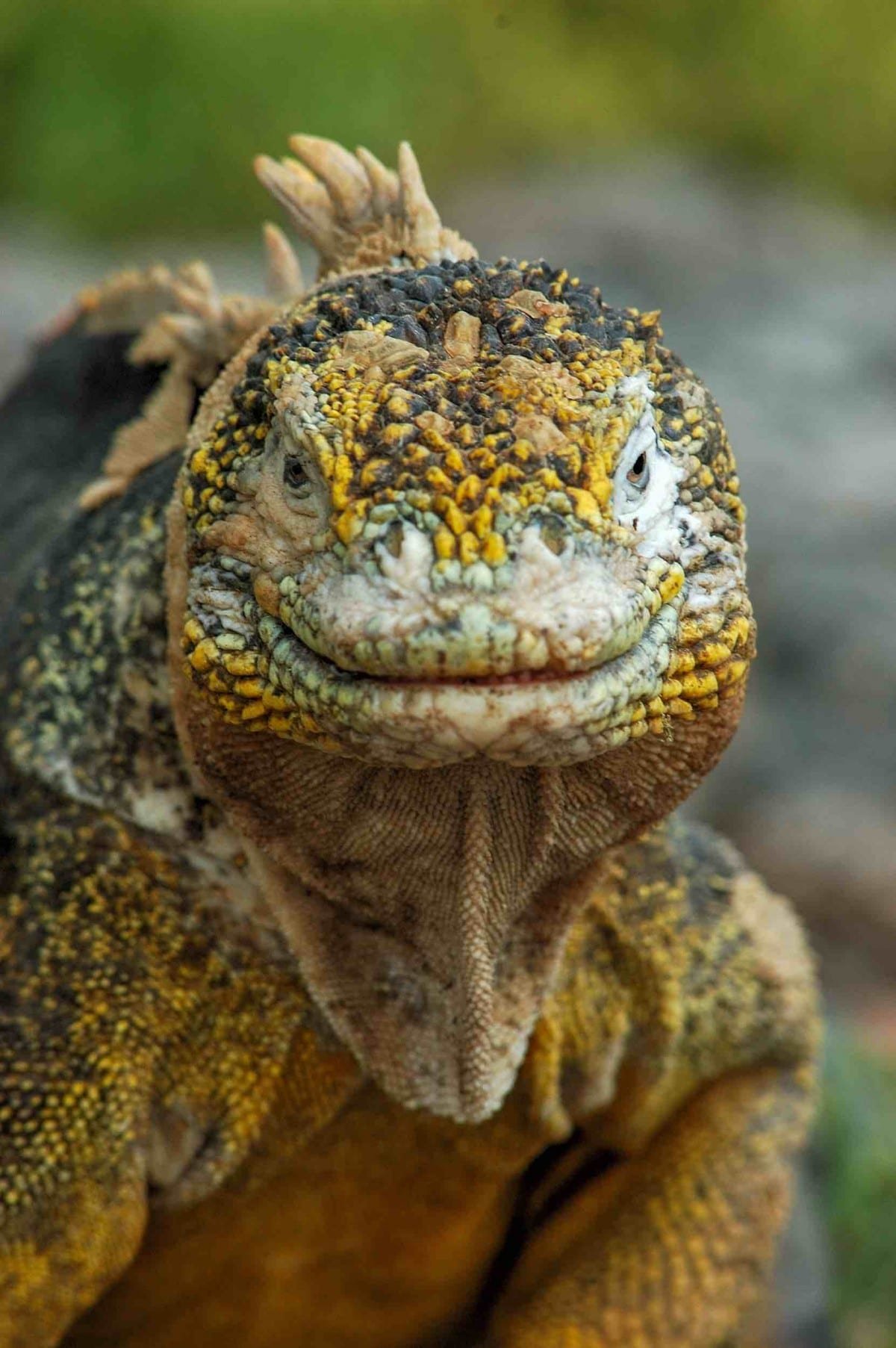
Isabela is widely visited, as evidenced by the port town on its southeastern shore (Puerto Villamil).
Rabida Island
Rabida Island (Jervis) is a tiny island (two square miles) located roughly three miles south of Santiago.
The island’s red sand beaches are home to brown pelicans. The saltwater lagoon here is a favorite feeding ground of flamingoes.
Bachelor sea lions are also found on the island.
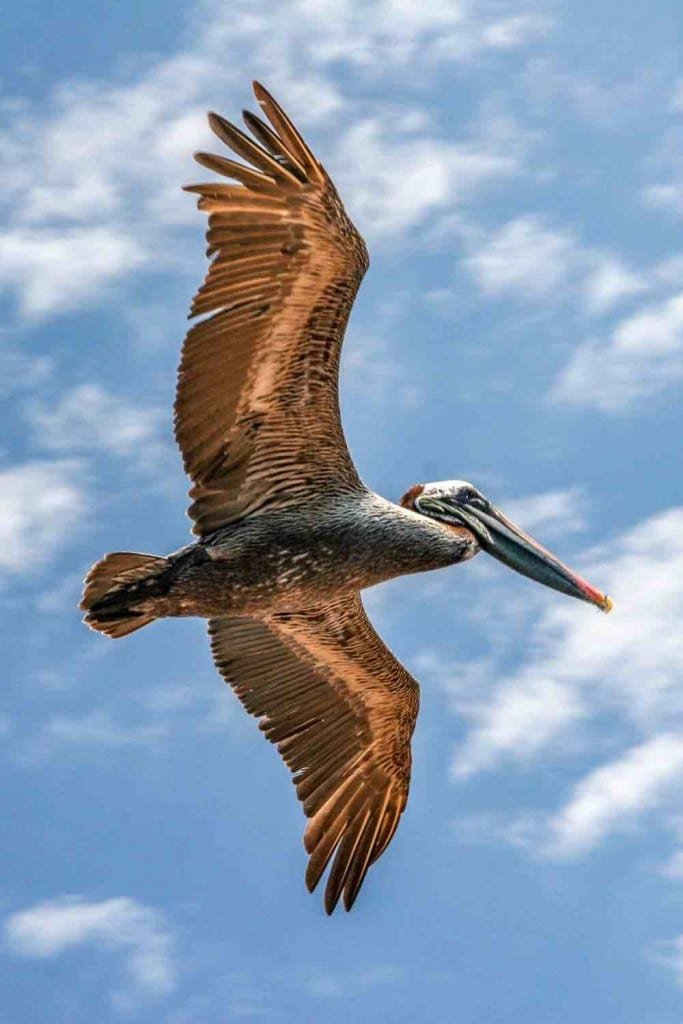
Marchena
Marchena (Blindoe) is a large island, located about 30 miles north-northeast of Santiago.
The island has an unusual caldera with fascinating lava formations, as a volcanic eruption took place here in 1992.
While Marchena Island is off-limits to Galapagos tourists, diving is permitted offshore.
Mosquera
Mosquera is a small sandy island, located between Seymour Norte and Baltra.
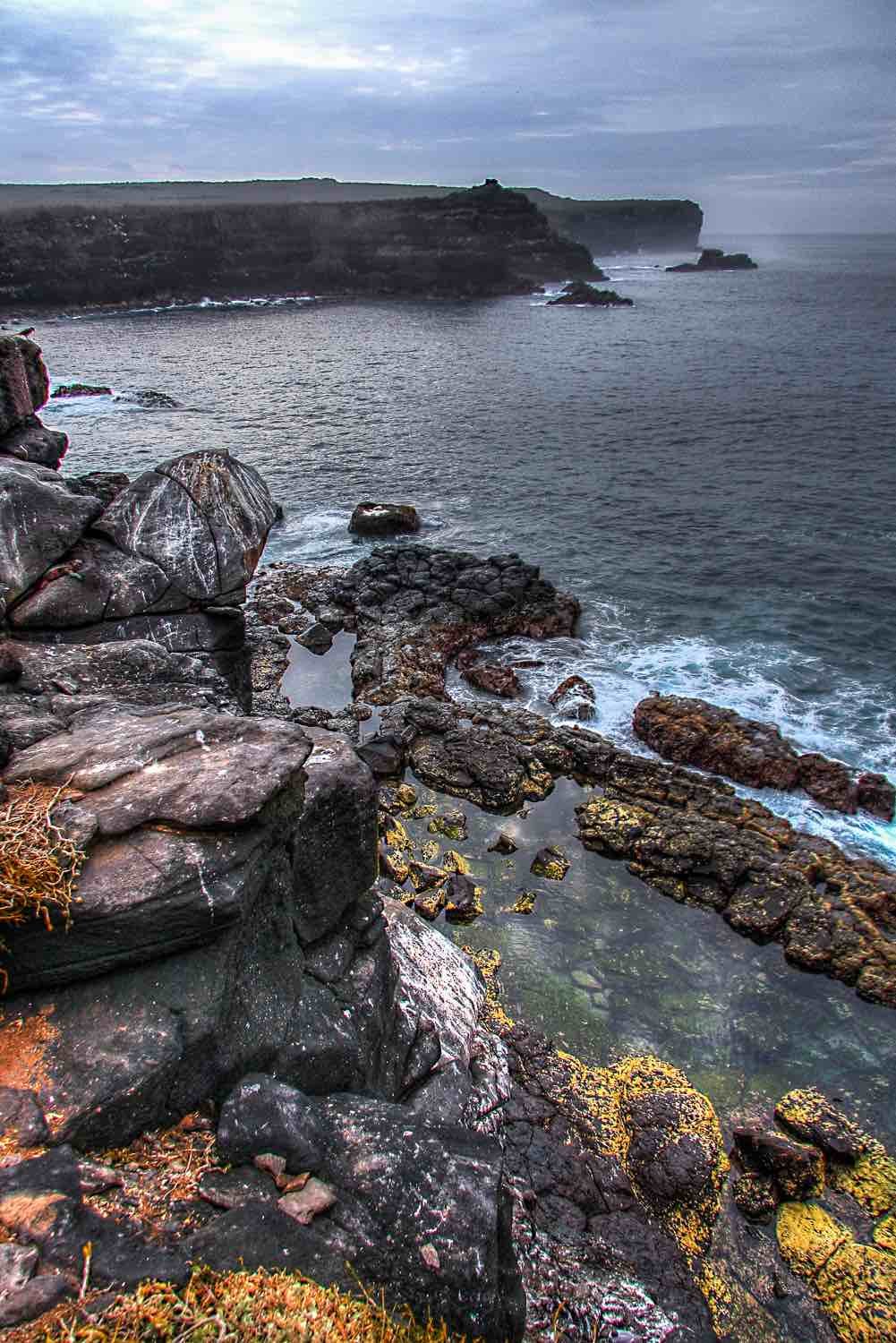
This is also an ideal place to swim with sea lions.
Piñta
Piñta (Abingdon), located about 25 miles northwest of Marchena, is home to marine iguanas, Swallow-tailed gulls, and fur seals.
Piñta was once home to a thriving population of endemic tortoises.

Lonesome George, who died in June 2012 at the Darwin Research Station on Santa Cruz, was the sole surviving member of this species.
Efforts to mate Lonesome George with females from similar tortoise species proved unsuccessful.
San Cristobal
San Cristobal (Chatham) is the easternmost large island in the Galapagos archipelago.
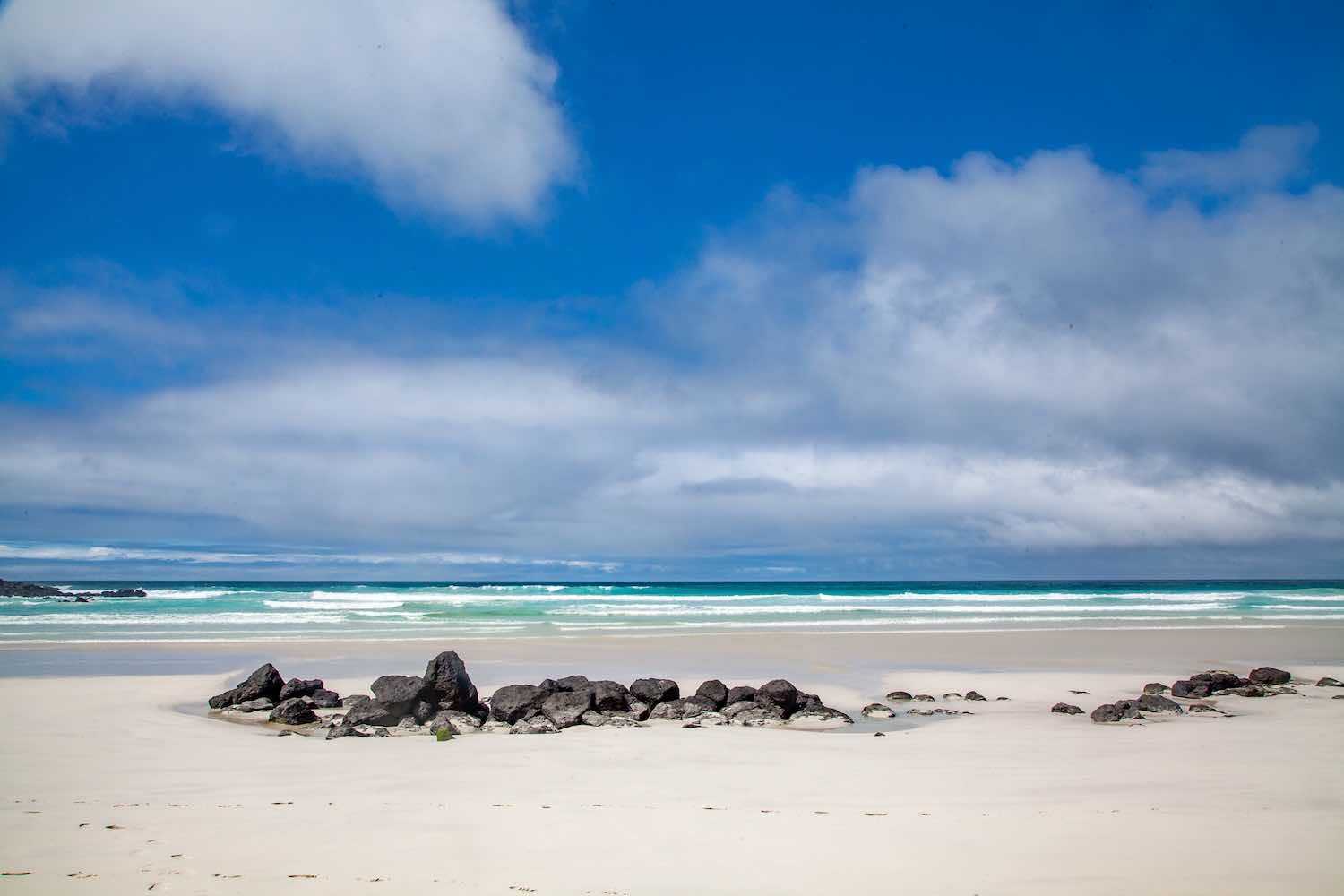
Visitors can take guided walks in the island’s highlands.
Santa Cruz
Santa Cruz (Indefatigable) is located near the center of the archipelago, and home to the largest settlement—Puerto Ayora—on Academy Bay (at the southern end).
This small town offers a basic grocery store, several dive shops, restaurants, and hotels.
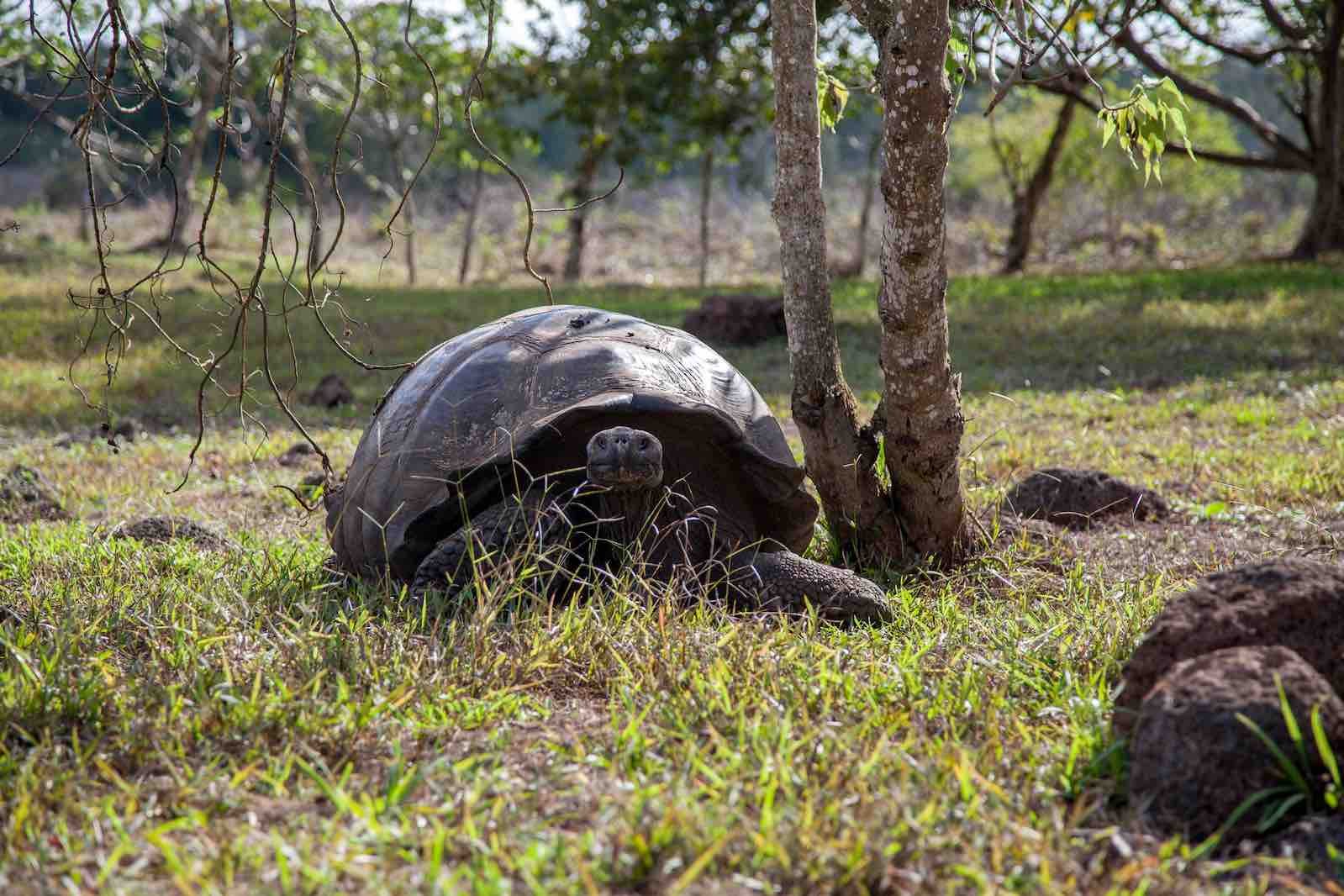
Giant tortoises can be observed grazing in highland pastures, while lava tubes and pits can be seen near the island’s center.
Santa Fe
Santa Fe (Barrington) is located about a dozen miles off the southeast coast of Santa Cruz.
Santa Fe is known for its unusual Palo Santo forests and Opuntia cacti. Here you’ll find land iguanas, lava lizards and sea lion colonies.
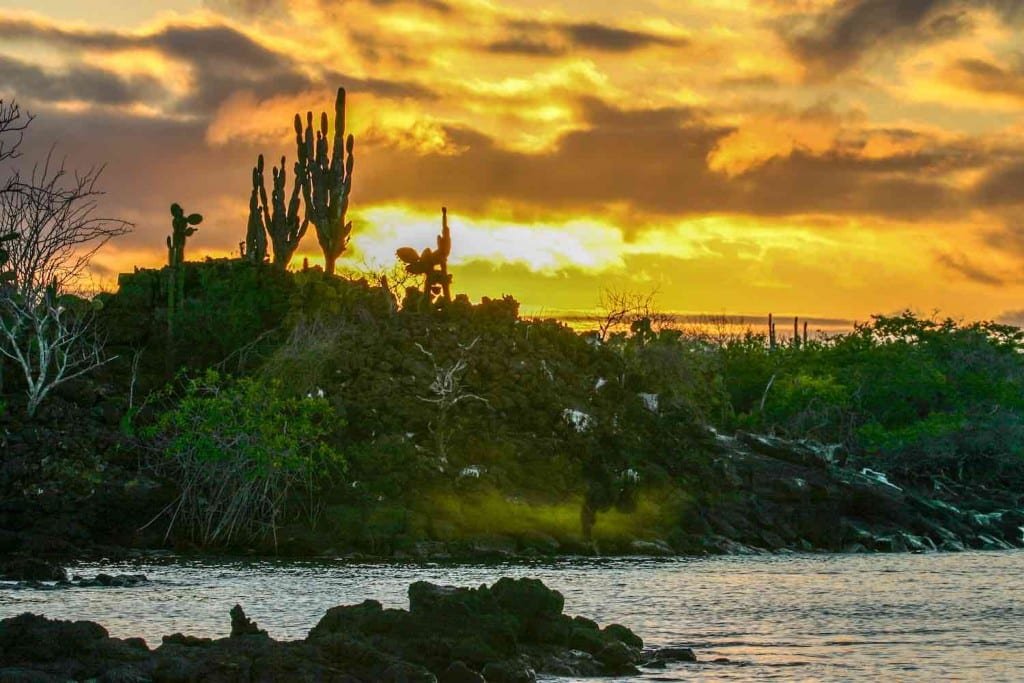
Santiago
Santiago (San Salvador or James) is a large island, located northwest of Santa Cruz.
This island experienced significant volcanic activity as recently as 1897.
As a result, James Bay, on the west coast, features a black sand beach—home to many species of migratory birds, Darwin finches, Galapagos hawks and sea lions.
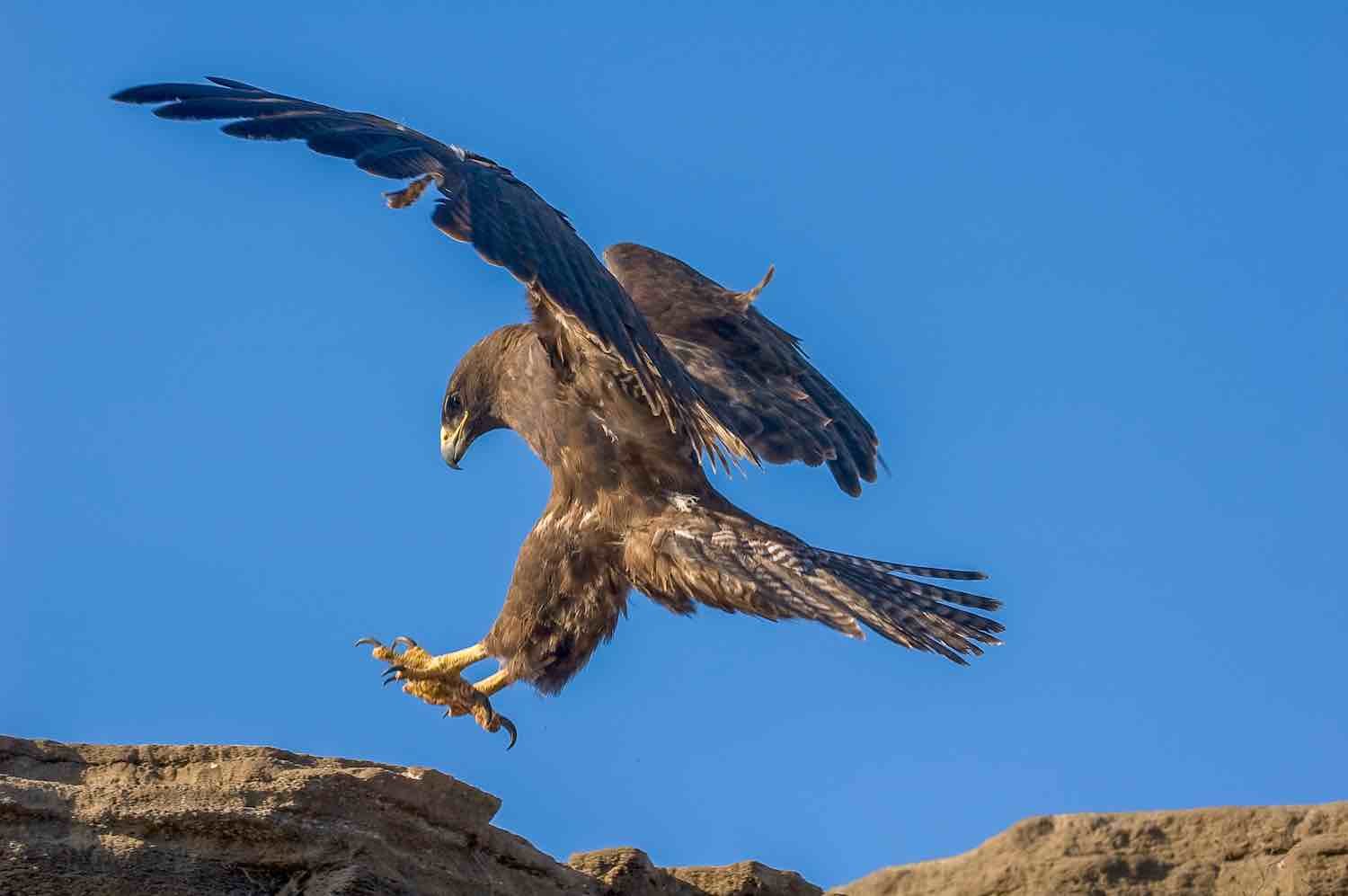
Seymour Norte
Seymour Norte (North Seymour) is a short volcanic plateau, located just north of Baltra.
North Seymour’s rocky shore is home to sea lions, swallow-tailed gulls, and bright red and yellow Sally Lightfoot crabs.
The interior is a nesting ground for Magnificent frigate birds. Blue-footed boobies and land iguanas are also common here.
South Plaza
South Plaza is a small island found off the east coast of Santa Cruz. Here you’ll find sea lions and land iguanas, alongside the aberrant swallow-tailed gull.
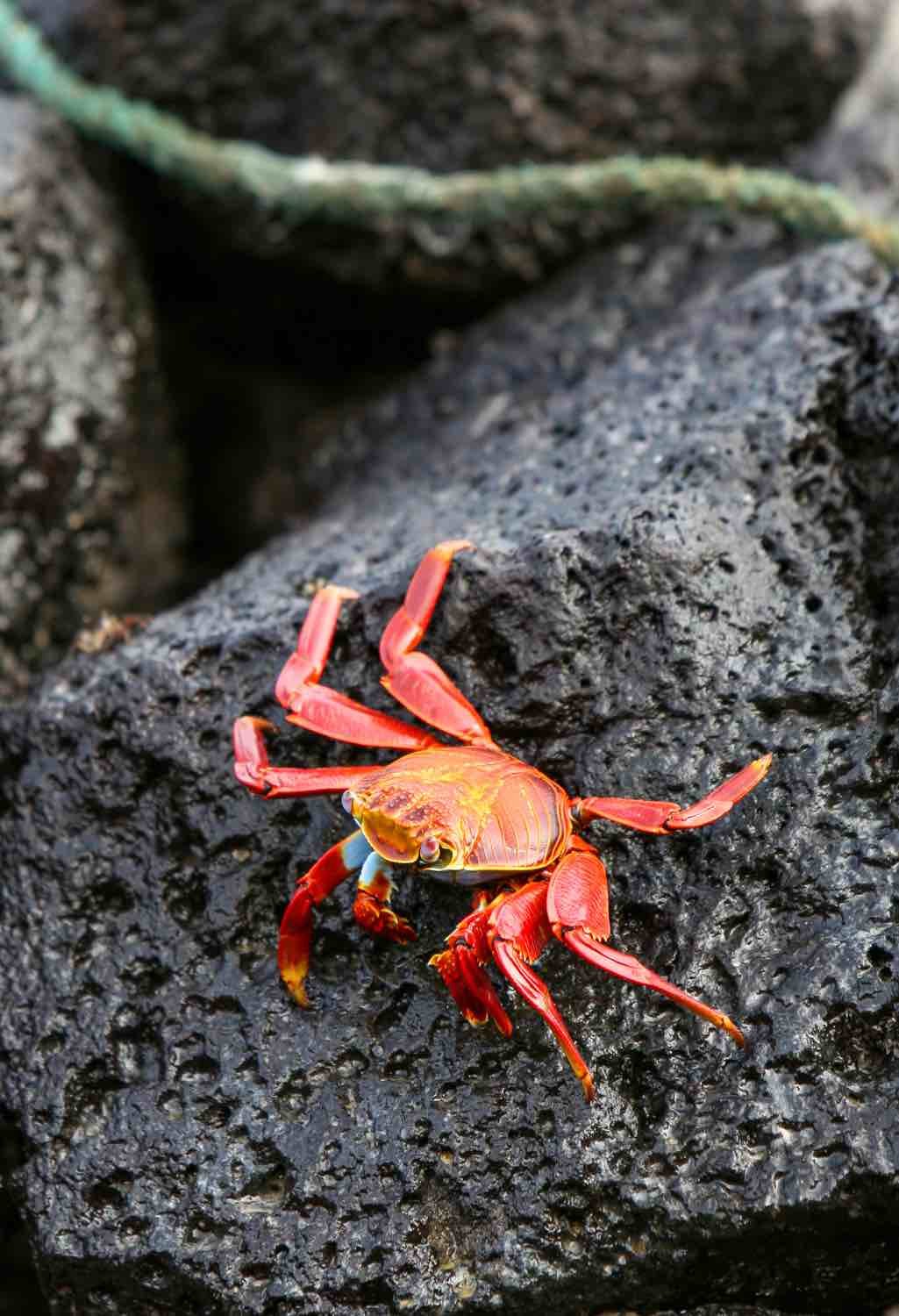
Tower
Tower (Genovesa) is a small island, located about 45 miles north-northeast of Santa Cruz and approximately 25 miles due east of Marchena.
Darwin Bay, encompassing the island’s southern side, was formed by a collapsed volcano.
Tower is sometimes referred to as “Birder’s Island”, named for its abundance of Frigates, Red-footed boobies, Noddy terns, tropic birds, doves, Storm-petrels, and Darwin finches.
At Prince Phillip’s Steps, visitors can walk across a volcanic landscape to a Palo Santo forest.
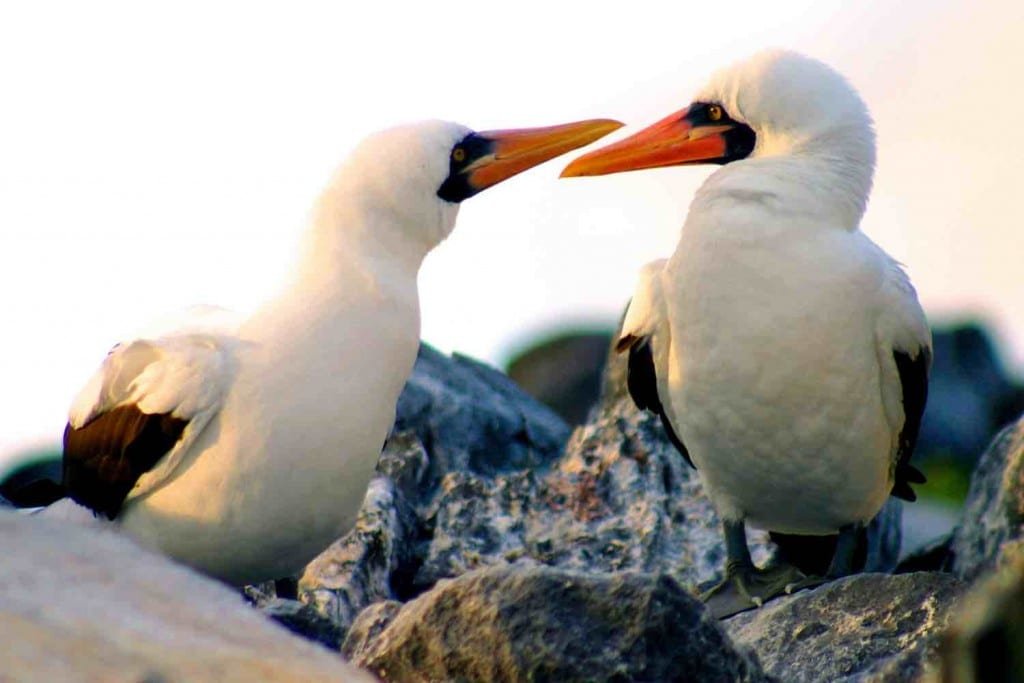
Wolf
Wolf (Wenman) is a remote islet, found to the far northwest of the island chain (about 22 miles southeast of Darwin.
Like Darwin, this island is an eroded volcano, with a peak not much higher sea level.
Wolf’s submerged caldera forms a bay with calm waters. This is an excellent location for diving and snorkeling.
